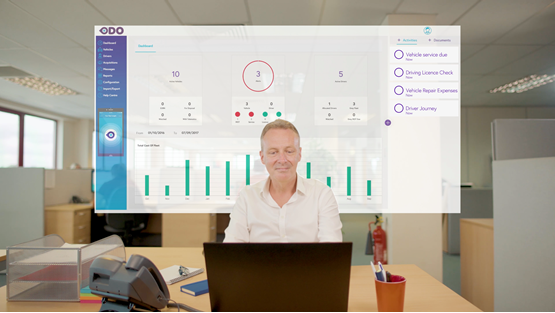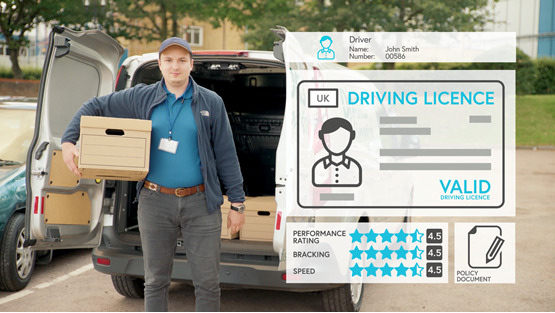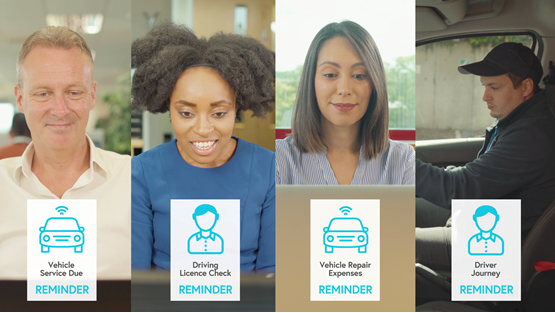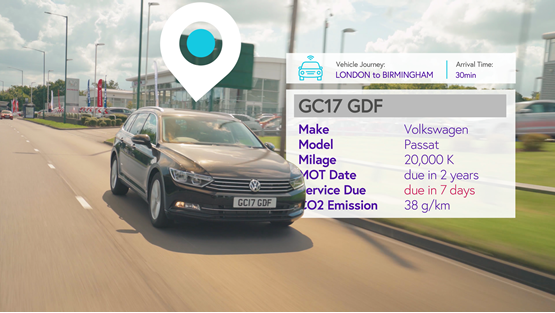Since its launch, Drive Software Solutions has been concentrating on big fleet operators. Now it has a solution for one vehicle upwards. Tom Seymour reports
Drive Software Solutions launched in 2002 to provide funding and vehicle management solutions to owners of large fleets and complex assets.
Now available in 55 countries worldwide, the business has remained true to its original strategy of partnering major leasing companies and global fleet operators with hundreds of thousands of vehicles.
Until now, that is. Two years ago, Drive began restructuring its operations to focus on a broader customer base.

Simon West-Oliver, Drive Software Solutions director of sales and marketing, believes the time is right for the company to expand its offering.
It had been receiving a growing number of enquiries from people who were managing vehicles where it was just one part of a broader job function.
“The technology wasn’t really there to do it properly 10 years ago in the global way we are planning,” West-Oliver says.
Drive’s ‘Business Unit 1’ continues to target multi-national leasing companies and global fleets; Business Unit 2 extends the fleet management solution into mid-market leasing companies (in the UK, this is the FN50 minus the top eight).
READ MORE: Simon West-Oliver gets promotion at Drive Software Solutions
This year, Drive has opened a third Business Unit, Odo, which is aimed at small-to-medium enterprise (SME) fleets upwards, from those operating just one vehicle to those with several thousand.
“Fleet managers are important to us and there are still those out there that don’t have proper software to manage their vehicles,” West-Oliver says.
“Odo is targeted on a single vehicle upwards model, but we’re also looking at the world of HR, personnel, accounting and general business management.”
Odo has been in pilot stage with 20 fleets since last autumn, but the new project officially went live on January 18.
The software is intended to be a simple-to-use fleet management tool that incorporates online dashboards, a mobile app and telematics. Importantly, it is based in the cloud, enabling it to be used by any size of business to manage vehicles.
It has three entry levels – Start, Pro and Expert – making it ideal for the smallest fleets but also with sufficient management capability for the largest. Some may not have even heard the term fleet management before.
Start includes the fleet dashboard, driver and vehicle details, document storage and licence details; Pro adds acquisition, disposal and funding management; Expert also incorporates servicing, maintenance and repair (SMR) management, fines, licence checks and grey fleet.
Yves Manoukian, Drive chief executive, says the business understands that the approach to implementing fleet management software is vastly different between the three markets it is now operating in.
Large- and mid-sized operations need consultative support and Drive has its own consultancy team to help with that.
However, the majority of small business might not have the money available to pay for this additional cost and Odo has been designed so it does not need any consultancy support.

“The platform is Drive, that’s the core of everything we do and it’s been developed for more than 25 years,” Manoukian says. “Starting Odo from scratch would be very difficult, but it is backed up by all those years of development.
“We have a vision where Drive is the core for the large corporates, it’s customised for the mid-sized players and it acts as the engine for Odo for the SMEs.”
While Manoukian would not share projections for volume or market share, or how many customers Drive currently has in the UK, he says that within two to three years Odo will have “thousands of customers”.
SMEs represent a potential market of 750,000 businesses in the UK, compared with the small number of large corporates and 20-to-30 mid-sized fleet operators.
Despite its potential appeal to fleets of all sizes, the primary target market for Odo is those with fewer than 100 vehicles who need IT support without the frills. Key are simplicity of use, the right pricing and the ability to improve efficiencies.
The goal is to democratise fleet management software for any small business that uses vehicles.
READ MORE: Drive Software Solutions appoints new sales executive mid-market
West-Oliver says: “It’s very easy for larger businesses to outgun smaller rivals on an IT basis.
"The cost of buying software can be many thousands of pounds and then you have a potential £10,000- or £15,000-worth of consultancy fees to put the software into the business.”
Those typical costs mean many SME fleets are not willing or able to invest in software.
“This means many businesses are muddling along with Excel spreadsheets and losing track of who’s driving what vehicle and forgetting to check licences,” says West-Oliver.
“What we’re doing is taking a sophisticated fleet management offer and making it really simple and easy to use. Catching one nefarious tyre purchase or avoiding excess mileage charges can pay for access to the system many times over.”
The next stage of Odo development will be the launch of its own agnostic telematics system as well as a fully integrated tele-matics offer, plus a mobile app for drivers with iOS and Android versions by June.
Odo has partnered with telematics provider Transpoco, but West-Oliver says it is more than just a white-label exercise as it has been customised and fully integrated with Odo and Drive.
The telematics system will be offered as an onboard diagnostics option or hardwired, dependent on customer requirements.

The forthcoming app will also offer a GPS alternative for the telematics install. Called Odo on the Go, it will track all driver journeys and their business expenses can be sent with a swipe to sync up to the system.
While the launch of Odo is a big focus for Drive this year, it does not mean the business is losing focus on its larger and mid-sized clients.
Martin Drake, co-founder of Drive and its product director, says significant disruptors to the traditional leasing market, such as electric vehicles, autonomous technology, mobility as a service and connected cars, are going to require changes in IT infrastructure.
“There is a lot of work going on within Drive to develop IT systems that are ready for how the leasing model is going to change,” Drake says.
He believes these changes will be driven by the onset of electric vehicles (EVs) and the winners in the UK leasing market will be the ones that can adapt their IT systems to cope.
While EVs will still need many of the same asset management features as traditional combustion engine vehicles, like SMR costs etc., Drake says a tighter integration of telematics is going to be necessary.
“We are seeing EV contracts on shorter terms and you have got to closely manage the asset and telematics data for a fleet is going to be key as the market moves towards this new technology,” he says.

“Tracking usage data on traditional combustion engines is important but it’s going to be even more crucial for fleets with EVs due to the driving style and charging infrastructure having to be closely monitored to keep a fleet running efficiently.”
Drive has been developed in a way that it can be adapted to leasing companies switching to new business models. Leasing companies that have older legacy systems may find it more difficult to pivot their IT infrastructure to adapt, claims Drake.
The partnership with Transpoco on telematics with Odo will have benefits for Drive’s other client bases, too.
While Drive has offered telematics in the past, Drake says the new system with Odo is a much more integrated solution, rather than being a plug-in to an existing system. Developments in this area will naturally filter through to Drive’s other customers.
“We’re already having conversations with clients about telematics and how important that is going to be to the future model,” says Drake.
ODO can be trialled for free
While Drive’s software is aimed at large corporate clients and comes with the sophistication they need, Odo has been given a consumer-style interface aimed at complete beginners.
There is a team of 65 developers for Drive and Odo has had a team of 10 full-time. This was scaled up to 27 people before launch.
Odo pulls in Cap HPI data automatically, so vehicle details will be filled out after inputting a registration number. Fleet managers are notified to problem areas using a red, amber green system.
The company is hoping to attract SMEs that have never considered fleet software with a 30-day free trial.
There are three levels to Odo. The Start version is free for (and only available to) companies with up to 10 vehicles, and features core functionality.
A Pro package is priced at between £2 and £3 per vehicle (dependent on fleet size) while the fully featured version called Expert is priced between £3.50 and £5 a vehicle.
Grey fleet cars are costed at an additional 20p per vehicle for fleets with more than 10 vehicles.
There is no minimum contract so fleets can take it month by month if they wish.



















Login to comment
Comments
No comments have been made yet.